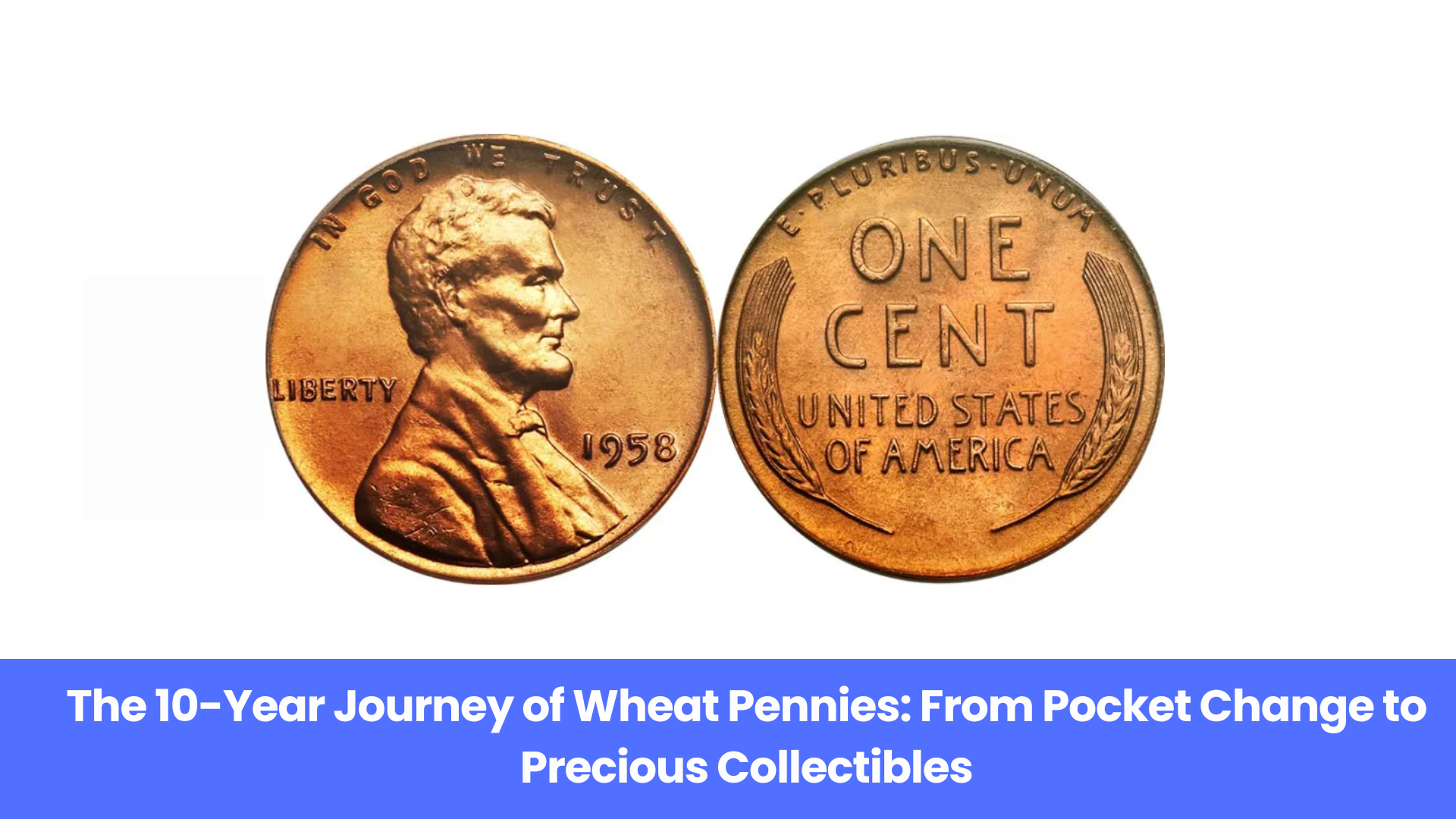Every coin has a story — and the Wheat Penny is one of the most loved coins in American history. With its shiny copper color and wheat design, it became a favorite for both coin lovers and history fans. Even today, this small coin holds great emotional and money value.
Table of Contents
ToggleThe History of the Wheat Penny
The Lincoln Wheat Cent, commonly called the Wheat Penny, was introduced in 1909 to mark 100 years since Abraham Lincoln’s birth. It was the first U.S. coin to feature a real person instead of a symbol.
Quick facts about the Wheat Penny:
- Designer: Victor David Brenner
- Years Minted: 1909 to 1958
- Composition: 95% copper, 5% tin and zinc
- Weight: 3.11 grams
The front side of the coin shows Lincoln’s face, while the back features two wheat stalks, representing America’s agricultural strength.
When the Lincoln Memorial replaced the wheat design in 1959, the Wheat Penny became a collector’s treasure overnight.
Why Collectors Love Wheat Pennies
Not all Wheat Pennies are equal. Some have rare mint marks, production errors, or were made in limited numbers. These small differences can make a huge difference in value.
In the last decade, social media and online auctions have made old coins exciting again. People started checking their piggy banks and old jars, hoping to find a hidden gem.
Wheat Penny Value Trends (2015–2025)
Let’s look at how the value of Wheat Pennies changed in the last 10 years:
| Year | Common (Circulated) | Mint Condition | Rare Varieties | Market Trend |
|---|---|---|---|---|
| 2015 | ₹4 – ₹20 | ₹80 – ₹250 | ₹25,000 – ₹1 lakh | Steady |
| 2019 | ₹10 – ₹50 | ₹250 – ₹600 | ₹40,000 – ₹2 lakh | Growth phase |
| 2023 | ₹20 – ₹80 | ₹400 – ₹1,000 | ₹50,000 – ₹2.8 lakh | High demand |
| 2025 | ₹25 – ₹100 | ₹500 – ₹1,200 | ₹70,000 – ₹4 lakh+ | Collector surge |
(Values converted approximately to INR for reader understanding)
Key Insights
- Common coins rose slowly due to copper prices and nostalgia.
- Mint-condition coins grew faster in value.
- Rare varieties saw massive jumps, doubling or tripling in worth.
Famous Wheat Pennies That Made History
1909-S VDB – The Legendary Start
Only 484,000 coins made. Today worth ₹80,000 to ₹4 lakh. The initials “VDB” caused public controversy, making this coin rare and famous.
1914-D – The Counterfeit Target
Low mintage and high fakes. Genuine ones are rare, priced between ₹15,000 and ₹2 lakh.
1922 No D – The Mint Error
A mistake where the “D” mint mark was missing. Now worth up to ₹2.5 lakh.
1955 Double Die – The Fan Favorite
The date and letters were accidentally doubled during minting. These coins sell for ₹80,000 to ₹8 lakh or more.
Why Wheat Pennies Are Popular Again
- Younger Collectors: YouTube and TikTok revived coin collecting.
- Better Awareness: Collectors now understand mint marks and grading.
- Safe Investment: In uncertain times, tangible assets like coins feel secure.
- Emotional Value: Many people find these coins in family boxes, creating personal connection.
How to Identify a Valuable Wheat Penny
Step 1: Check the Year and Mint Mark
Look under the date. “D” is for Denver, “S” for San Francisco, and no mark means Philadelphia.
Step 2: Check the Condition
No scratches or wear? It’s more valuable. Professional grading adds even more worth.
Step 3: Look for Errors
Doubling, off-center strikes, or missing letters are key signs of rare coins.
Step 4: Use Trusted Price Guides
Online auctions, grading services, or coin experts can help you find real value.
Common Myths About Wheat Pennies
-
❌ Myth: All Wheat Pennies are valuable.
✅ Truth: Most are worth only a few rupees unless rare or mint condition. -
❌ Myth: Cleaning coins increases value.
✅ Truth: Cleaning destroys natural shine and lowers value. -
❌ Myth: Only old coins matter.
✅ Truth: Even modern error coins can be valuable.
The Emotional and Historical Connection
Wheat Pennies are not just about money — they are a piece of American history. They have passed through world wars, economic crises, and decades of change. Holding one is like holding a century of stories.
The Future of Wheat Pennies
Experts believe their value will continue rising, especially for:
- Graded and certified coins.
- Rare varieties like 1909-S VDB and 1955 Double Die.
- Young collectors entering the market.
- As technology evolves, digital authentication will also protect buyers from fakes.
FAQs
What are Wheat Pennies made of?
They are made of 95% copper and 5% tin and zinc.
Which are the most valuable Wheat Pennies?
The 1909-S VDB and the 1955 Double Die are the most valuable ones.
Should I clean my Wheat Pennies?
No, cleaning removes natural patina and lowers their collector value.
Where can I sell them?
You can sell through auction sites like Heritage Auctions, Stack’s Bowers, or trusted collectors’ communities.
Conclusion: Tiny Coin, Big Legacy
The Wheat Penny isn’t just an old coin — it’s a living piece of history. From a few rupees to lakhs, these coins prove that small things can carry big stories.
Whether you’re a new collector or just curious, start checking your old jars — you might just find a treasure waiting to shine again.

